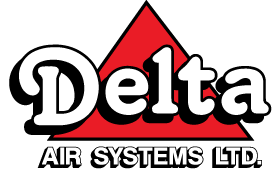When to Turn on Your HRV System
Most homeowners do their best to make sure their home is sealed and air-tight. It’s helpful in keeping heating and cooling costs lower, as it minimizes air leaks. However, it comes with some downsides. For example, having a properly-sealed home is great for efficiency but it limits the amount of fresh air that circulates throughout your house. Therefore, it negatively affects your indoor air quality. That’s why homeowners use ventilator systems.
A Heat Recovery Ventilator, better known as an HRV system, (or Energy Recovery Ventilator, a.k.a. an ERV), lets you reap all the efficiency benefits of an air-tight home plus an endless cycle of fresh air. During the winter, air quality is a priority as most houses remain sealed completely for several months. Now, you might be wondering when to turn on your HRV system. It’s a valid question and we answer it for you here.
How does an HRV work?
The simplest explanation of how an HRV system works is that it exchanges the stale air in your home for fresh outdoor air. It does this by capturing the heat using a heat exchanger from the outgoing indoor air and using it to preheat the incoming fresh, cool air. Most Heat Recovery Ventilators are designed to work in conjunction with your forced-air heating system and pre-existing ductwork to disperse a constant flow of fresh air.
When to Turn on Your HRV System
One of the most common questions we get from homeowners is about when to turn on your HRV system. Some people believe that HRV systems should only be used in the winter, while others think that they should be used all year long. Technically, neither answer is wrong. That said, we suggest using your HRV system anytime all of your windows and doors are closed.
The system can cool the incoming air during the summer in the same way that it heats the air during the winter. So you won’t be sacrificing efficiency during the summer months either. Since the colder outdoor air is usually drier in the winter, an HRV can also help reduce excessive humidity in your home.
We recommend setting your HRV to “minimum” or “vent”. However, the 20/40 setting is also good because it only runs the system for 20 minutes every hour. This way, you’ll have fresh air coming into your house at regular intervals. This will vary depending on the options available on your controller.
Benefits of an HRV System
It’s clear that HRV systems provide homeowners with many benefits. The biggest advantage that HRV systems have to offer is that they drastically improve the air quality in your home. During the winter, families spend a lot of time indoors, and if your home is properly sealed, there’s no fresh air coming in. This means that your family is breathing in stale air much of the time. HRV systems allow you to get all of the benefits of fresh air without sacrificing heat like you would if you were to open your windows. Your HRV system also helps eliminate pollutants, like moisture, mould, chemicals, and bacteria, from your home.
Install an HRV system and benefit from cleaner air!
Call Delta for HRV installation or repair.
Delta has been proudly serving the Kitchener-Waterloo, Cambridge, and Guelph regions’ HVAC needs for over 65 years. We strive to provide our clients with reliable service and cost-effective solutions.
Be the first to see our latest promotions – follow us on Facebook and Instagram.



